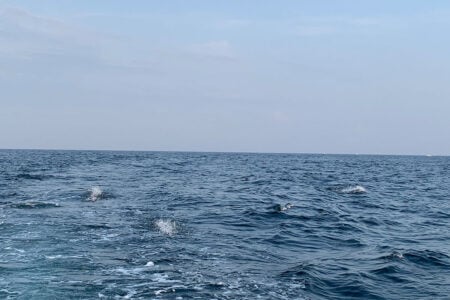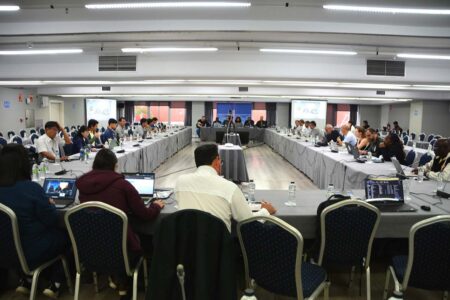An increase in limits & a call for improved DNA data collection.
NOAA Fisheries recently announced a significant increase in recreational retention limits for bluefin tuna, one which essentially allows a directed head boat fishery for the first time in decades. Taking effect immediately the action allows head boat operators with a highly migratory species (HMS) permit to retain 12 school bluefin (from 27 to less than 47 inches) and two large school/small medium bluefin (47 to less than 73 inches) per trip, which is significantly up from the one-fish total limit in 2023.
Overall, the entire recreational fishing community will enjoy a significant increase in bluefin tuna limits in 2024. For private vessels with an HMS permit, the adjusted bag includes two school bluefin and one large school/small medium (up from just one large school/small medium), while HMS permitted six-pack charters are allowed three school bluefin and one large school/small medium (also up from just one large school/small medium) for their passengers this season.
“This measure is a shot in the arm for the recreational community’s access to this tremendous fishery,” said Capt. Tim Brady of the Stellwagen Bank Charter Boat Association (SBCBA). “The different recreational bag limits recognize the different goals, objectives and financial constraints of each user type and the fact that in the interest of environmental justice and equity those that can’t afford their own boat or go on six-pack vessel can now afford a head boat with bag limits that work for the head boat and the private angler,” Capt. Brady added.
The official SBCBA statement went on to credit key representatives working through the International Commission for the Conservation of Atlantic Tunas (ICCAT) and HMS advisory process in spearheading efforts for increased recreational bag limits for bluefin tuna, notably Capt. Mike Pierdinock of the Cape Cod based charter boat Perseverance, and Nick Cicero of the Folsom Corporation; both are members of the ICCAT Advisory Committee representing recreational fishing interests.
“It’s been a long hard battle,” Cicero said following the announcement. “Mike (Pierdinock) and I have lobbied for years for more accessibility to the inshore bluefin stock for the angler of average means,” said Cicero, adding “We’ve repeatedly pointed out that the head boat limits were unfair to the angler who couldn’t afford to hire a six-pack or under boat.”
“The different recreational limits recognize the different goals and objectives of each user type and the fact that in the interest of environmental equity those that can’t afford their own boat or go on six-pack trip can now afford a head boat with bag limits that should work for the head boat and private angler,” Capt. Pierdinock noted.
Now that anglers have better access to the bluefin fishery, Cicero and Pierdinock stressed the need for recreational permit holders to accurately report catch, while also helping support the science needed in the bluefin tuna fishery which includes collecting bluefin DNA samples for researchers. Dr. Walter Golet, Assistant Professor with the School of Marine Sciences at the University of Maine is coordinating with his team on the collection of close-kin mark-recapture (CKMR) which is a new technique used to estimate the ratio of genetically matched larvae; simply put, it’s an attempt to map out the family tree of bluefin tuna in the western Atlantic.

With the help of bluefin tuna anglers collecting bluefin tuna fin clips, researchers hope to better estimate whether or not that bluefin came from the western stock or the eastern stock, helping determine overall population abundance and future productivity. According to Dr. Golet and his team, this information may be able to provide managers with more accurate, real-time data to better manage the Atlantic bluefin fishery.
“I just wanted to emphasize how important your folks are to this effort since a lot of the landings overall tend to be the bluefin less than 73 inches,” Dr. Golet said via email, explaining how non-commercial fish in the school and large school class caught by the angling community are the most critical for his team’s genetics work. HMS permit holders in the recreational community willing to participate use kits provided through the CKMR program to take small fin clips from any of the bluefin finlets – harvested fish or releases – to place in a vial with length information and location data submitted back to the University of Maine.
According to Capt. Pierdinock, the U.S. bluefin data set for small recreational bluefin tuna lacks an adequate DNA sample set. “The commercial bluefin tuna DNA data set is robust,” he said, explaining how recreational bluefin tuna data can help secure or possibly even expand future bluefin quotas when the fishery is assessed again in a few years.
Order your recreational bluefin tuna DNA kit from the University of Maine here. You can contact Dr. Golet at 207-351-5413. And don’t forget, to fish for any tuna species you’ll need to secure an HMS permit for your vessel.




